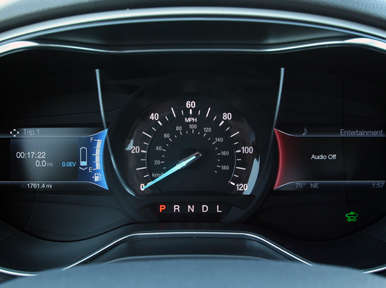Recent Articles
Popular Makes
Body Types
How To Get Better Gas Mileage
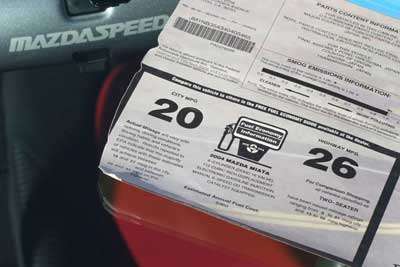
Time was you could roll into a gas station; ask for a dollar’s worth of gas and roll out with three gallons of premium in the tank of your ’65 GTO ready to go incite mayhem all up and down the highway. These days, a dollar’s worth of gas is like ¼ of a gallon of regular (if that much). Times have changed, gas is a lot more expensive, and many people today look at how many miles per gallon the car gets before they look at the horsepower and torque figures for the engine.
While reducing the expense of driving is reason enough to want to improve the fuel economy of your automobile, the other side of it is the more fuel you burn the greater the harm you wreak upon the environment. The freedom of the open road ain’t exactly free y’all. Incidences of asthma are higher than they’ve ever been in most major cities, and while those wonderfully golden sunsets we’re getting now are especially beautiful, the fact remains the wondrous colors we’re seeing are occurring because the sunlight is being refracted through particulates suspended in the atmosphere from all those hydrocarbon emissions.
With that in mind, according the experts at the U.S. Department of Energy, there are a number of steps every driver can take to get better gas mileage.
How To Get Better Gas Mileage: Choose The Most Fuel Efficient Vehicle For Your Needs
Pay close attention to fuel economy ratings if you’re in the market for a new car or a (new to you used car). Get the one that best fulfills your needs, while also delivering exceptional fuel economy numbers. Ask yourself if you really need a V8 or a V6 engine, or if one of the new turbocharged and direct injected lower displacement powerplants will serve your needs just as effectively.
By the way, if you just bought a car, or you’re only two or three years into a loan, it usually makes more sense to go ahead and pay it off rather than trading for a more fuel-efficient new model. While you’ll buy less fuel, you’ll be paying the older one off simultaneously so any financial savings derived from using less fuel will likely be offset by the higher car payment.
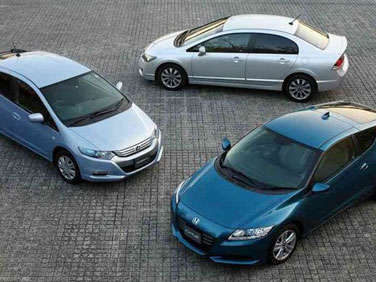
How To Get Better Gas Mileage: Keep Your Car In Good Shape
In addition to conserving fuel, keeping your car in good shapehas a number of other side benefits too. A well-maintained car holds its value better at resale time, is less likely to break down and leave you stranded on the side of the road, and holds its appeal longer— which means you’re less likely to want a new car too soon.
The first and foremost concern is the engine; keeping it properly tuned makes the car run more smoothly and will help you get better gas mileage. Properly inflated tires have less resistance to rolling, this means your car doesn’t have to work as hard to get moving and keep moving. Making less work for your car to do is how you get better gas mileage. By the way, the maximum recommended pressure on your tire’s sidewall might not be the optimal tire pressure for your particular car. Refer to the sticker in the driver’s doorframe to find the specifically recommended tire pressure for your vehicle.
The weight of the motor oil you use can make a big difference too. Using a grade of oil heavier than what is recommended by the manufacturer can make your engine run less efficiently, which can make it use more gas. Your owner’s manual will list the proper grade of oil for your vehicle.
Speaking of weight, racers have long known excess weight is the enemy of performance. It is also the enemy of fuel efficiency. The more weight your car carries, the more work it has to do—so the more fuel it consumes. Keep your car free of extraneous cargo and trash. Remove anything you don’t need specifically for your travels that day and keep your trunk cleared of everything except emergency items like the jack, the spare tire and etc.
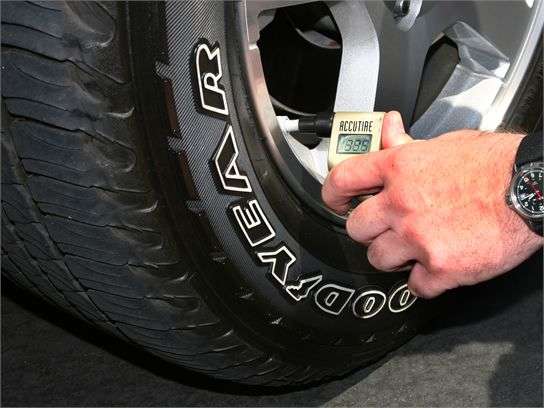
How To Get Better Gas Mileage: Buy Your Fuel More Intelligently
Gases expand when they’re heated and contract when they’re cooled. Since gas pumps measure the volume of gas purchased, you actually get more fuel if you buy it during the coolest part of the day. Typically, this is first thing in the morning after the gas tanks have cooled during the night from the heat of the day.
If your car’s owner’s manual says your engine will run on regular unleaded fuel, using premium unleaded won’t make it run better, or faster. Use the less expensive regular fuel. While it won’t improve your gas mileage per se, it will save you money. By the way, most cars that require premium-unleaded fuel will also run on regular unleaded, albeit at a slight loss of performance.
In most cases, it makes more sense to buy fuel wherever you are, rather than going out of your way to find the cheapest gas station. The additional distance you’ll travel to get to the lower priced station can potentially erase any savings achieved by purchasing the fuel at the lower price. That said, while planning your day’s trips; if there is a cheaper gas station on your route, take advantage of it by all means. Websites like GasBuddy.com can help you find the most inexpensive gas stations in your area.
When filling your tank, avoid “topping off” (pumping more fuel into the car after the pump’s automatic shutoff stops the flow of fuel into your car’s gas tank). This can cause you to overfill your gas tank, which leads to fuel spills and wasted gasoline. When replacing your gas cap, make sure your fuel tank is sealed tightly. Usually, turning the cap until it clicks three times will ensure this. An improperly sealed gas tank allows fuel to evaporate.
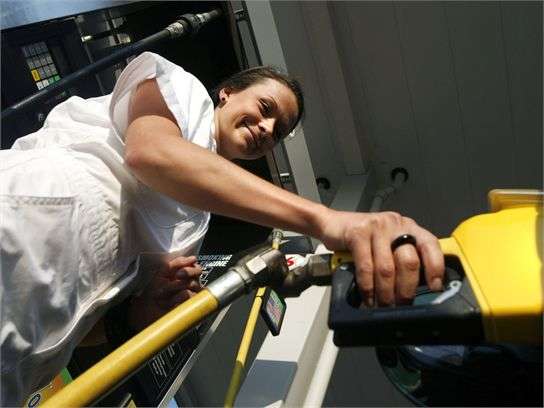
How To Get Better Gas Mileage: Plan and Combine Your Trips
When planning your day’s errands, try to do them all in one outing. A warm car uses less fuel than a cold one, so when you have a number of things to do, if can you get them all done in one pass while the car is still warm, you’ll get better gas mileage. Try to plan your trips so you go to the most distant destination first, then work your way back home going to each progressively closer place. This gets your car good and warm on the way to the first stop, enabling you to take advantage of the residual heat on your subsequent shorter runs.
If you have to drive to work every day, see if your company will permit flex time, so you don’t have to commute during peak periods. Ask about telecommuting—working from home is the most fuel-efficient method of all in terms of commuting back and forth to work. Carpools and ride-share programs can help you save money on fuel costs and in a lot of cases will get you there faster because you can take advantage of high occupancy vehicle (carpool) lanes.
Public transit, if it goes where you need to be, is the best solution of all. Sharing your fuel consumption with many other people in the same vehicle, you can go much farther on less money and fewer gallons of fuel.
When using your car for traveling on family vacations and weekend getaways, try to pack everything you’re taking along inside the car, rather than relying upon roof racks. Anything attached to the outside of the car will increase aerodynamic drag and (you guessed it) will make the car have to work harder to cover the same distance. Further, pack carefully. Only take what you’ll need; remember the more weight you carry the more fuel your car will use.
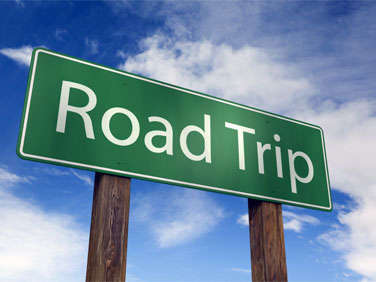
How To Get Better Gas Mileage: Drive More Efficiently
Driving more efficiently means driving more smoothly for the most part. Roll onto the throttle gently from traffic signals and stop signs. Avoid hard braking and rapid acceleration (jackrabbit starts). Avoid diving in and out of lanes and waiting until the last minute to blast through a hole in traffic to exit the freeway. Those maneuvers make your auto use more fuel.
Find a lane you’re comfortable in on the freeway and set your cruise control to match the flow of traffic. Use your overdrive gear on the highway if you have one, and always drive in the highest gear possible. Higher gears move your car with less effort from the engine and less effort from the engine means more fuel in your tank.
Driving at moderate speeds helps too. The fuel efficiency of most cars drops off above 50 miles per hour. In other words, driving within the speed limits keeps more fuel in your tank. There are a couple of other significant benefits to driving this way too; you’re less likely to get into an accident, and you’re less likely to attract the attention of law enforcement.
When you’re going to be stopped for extended periods of time, shut your engine off. Idling wastes fuel. This is why many newer cars are coming equipped with an auto start/stop solution. At railroad crossings, if the train has three or more locomotives, shut the engine off—it’s going to be a long train. A good rule of thumb is if you’re going to be stopped for thirty seconds or longer, it’s more efficient to stop the engine and restart it when you’re ready to drive again. Yes, a spritz of fuel is used to restart the engine, but not as much as you’ll use sitting and idling your engine for an extended period of time.
By the way, the belief that driving with the windows open on the highway uses less fuel than driving with the air conditioner on is a myth. Driving with the windows down actually creates more aerodynamic drag on the car than driving with the windows up and the air conditioner on. Yes, you really can be cool and save fuel too.
Unlike in the “good old days”, you don’t need to wait for your engine to warm up before driving. You can drive your car just as soon as the engine starts. In fact, modern cars warm up more efficiently when they’re being driven. Just make sure you avoid full throttle starts and extremely hard acceleration until the engine is fully up to operating temperature to avoid damaging it.
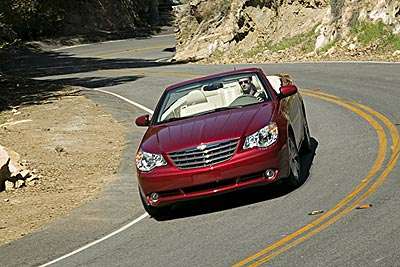
How To Get Better Gas Mileage: Keep Track Of Fuel Consumption
Yes, the EPA estimates the fuel economy your car gets, but those are just estimates. You need to learn what your specific car is doing.
To do so, fill your car with fuel, reset your trip odometer to zero and drive normally. When your fuel gauge is down to a quarter of a tank, refill your car, noting the number of gallons the gas pump says it took to do so. Divide that number into the mileage on your trip odometer. If it took 20 gallons to refill the tank and your odometer reads 400 miles, your car averaged 20 miles per gallon. (400 miles / 20 gallons = 20 miles per gallon).
This can also alert you to potential problems with your car.
If your gas mileage dips drastically, but you haven’t changed your driving style, it could mean something is wrong with your engine; your tires are underinflated, or etc. In addition to helping you drive more efficiently, keeping close track of your fuel consumption can also alert you to potential repair problems before they become significant and potentially cost you more money.
